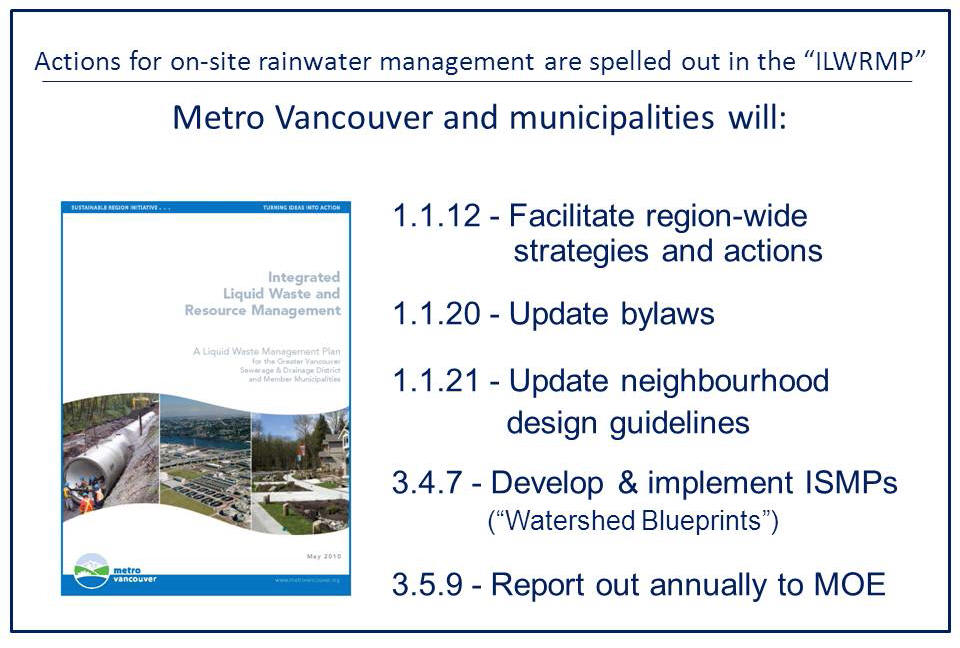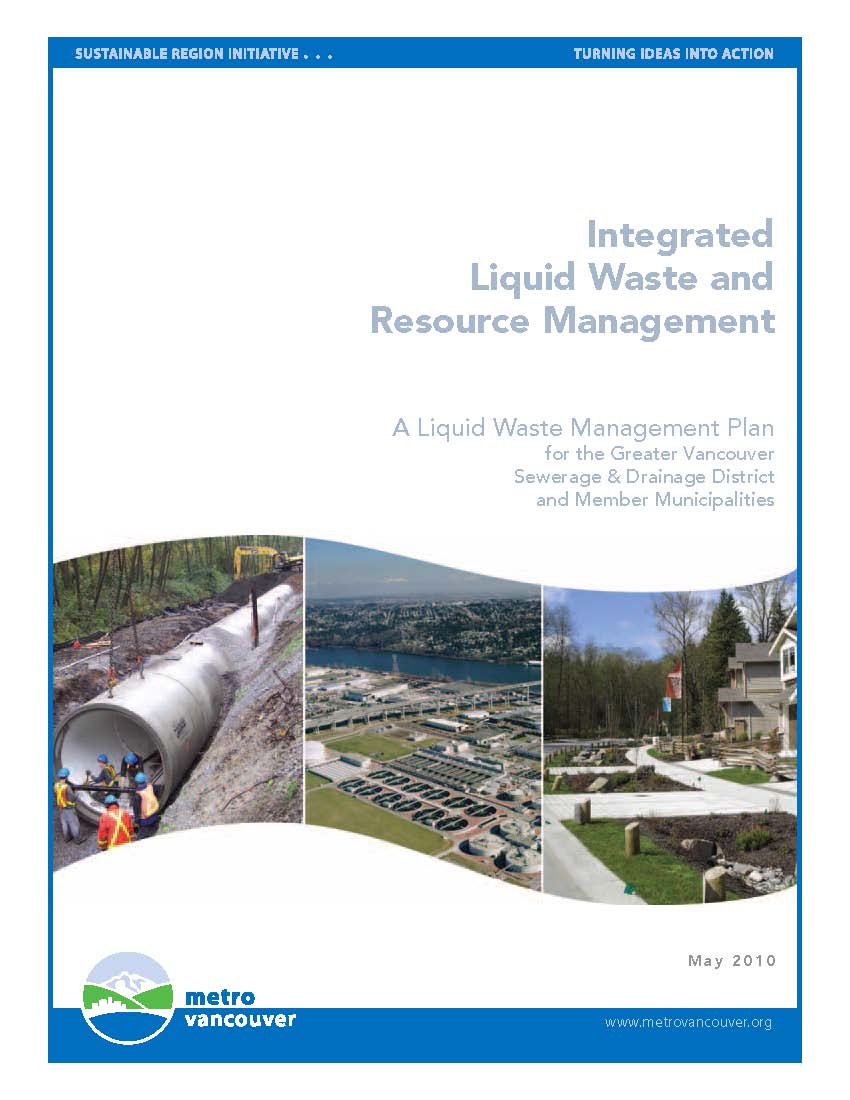WBM Express Inter-Regional Focus Group: Metro Vancouver hosted kick-off working session in July 2010
Genesis for Water Balance Model Express
In July 2010, the Water Balance Model Partnership convened a focus group to initiate development of the Water Balance Model Express for Landowners. Hosted by Metro Vancouver, the focus group included representatives from four BC local governments – District of North Vancouver, District of West Vancouver, City of Surrey and Cowichan Valley Regional District. In addition, a City of Calgary representative attended as an observer.
Central Saanich Bylaw was a Source of Inspiration
“Our purpose in convening the brainstorming session was to get the ball rolling regarding development and implementation of the “Water Balance Model Express” for use by landowners and homeowners. The mission of the Focus Group is to create the vision,” stated Ted van der Gulik, Partnership Chair.
 “The genesis for the WBM Express concept was the Surface Water Management Bylaw enacted by the District of Central Saanich in February 2010. Whenever the concept has been brought up in conversation or recent meetings, it has resonated. Clearly, it is a winner. It can fill a need and we anticipate that it can ultimately influence landowner and homeowner behaviour.
“The genesis for the WBM Express concept was the Surface Water Management Bylaw enacted by the District of Central Saanich in February 2010. Whenever the concept has been brought up in conversation or recent meetings, it has resonated. Clearly, it is a winner. It can fill a need and we anticipate that it can ultimately influence landowner and homeowner behaviour.
“The Central Saanich Bylaw encourages use of the Water Balance Model at the individual property scale. This has prompted the Partnership to do something completely different to support what Central Saanich is endeavouring to accomplish with their bylaw. Everyone can then benefit.”
Vision for Inter-Regional Collaboration
“An important element of this vision is the opportunity it creates for Georgia Basin collaboration by bringing together representatives from Metro Vancouver and Vancouver Island,” continued Ted van der Gulik. “This can also be inter-provincial in scope because of the interest expressed by the City of Calgary in aligning efforts to meet a common need.”
“The project goal is that when homeowners go to a ‘rainwater management link’ on the host local government website, they would be able to: type in their address; access a version of the WBM that has pre-set values (for climate, land use); apply source controls; run scenarios; and print a report.”
To Learn More:
Managing Rainwater Resources in Metro Vancouver
 “The vision for the WBM Express aligns with the goals, strategies and actions in the Metro Vancouver region’s Integrated Liquid Waste & Resource Management Plan, adopted by the Regional Board in May 2010. In fact, development of the WBM Express would allow Metro Vancouver member municipalities to better deliver on regulatory compliance,” reported Robert Hicks, Senior Engineer with Metro Vancouver and an original champion for the Water Balance Model.
“The vision for the WBM Express aligns with the goals, strategies and actions in the Metro Vancouver region’s Integrated Liquid Waste & Resource Management Plan, adopted by the Regional Board in May 2010. In fact, development of the WBM Express would allow Metro Vancouver member municipalities to better deliver on regulatory compliance,” reported Robert Hicks, Senior Engineer with Metro Vancouver and an original champion for the Water Balance Model.
Regulatory Context
Two years in the making, the Plan has established the framework for moving beyond regulatory compliance to transitioning Metro Vancouver to an approach where management of liquid discharges and rainwater resources is planned and implemented within a broader, sustainability framework.
The strategy for managing liquid discharges and rainwater as resources has two tracks: End-of-Pipe and At-the-Source.
“The Plan requires that member municipalities update municipal bylaws to require on-site rainwater management; and update municipal utility design standards and neighbourhood design guidelines to enable and encourage on-site rainwater management,” observed Robert Hicks.
“Addition of the WBM Express to the local government toolkit would help municipal front counter staff show homeowners how to reduce their Water Footprint.”
To Learn More:



